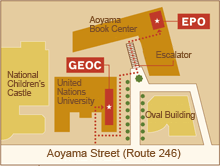Overview
Asia and the pacific region has 66% of the world’s poor in world’s most densely population region, 34% of global GHG emission,with the lowest ecological carrying capacity amongst the world’s regions.
In order to ensure its support and global effectiveness, UNEP set six regional offices with the 35+ professionals to cover 46 countries in Asia Pacific
Satoyama Initiative promotes activities consistent with existing fundamental principles including the ecosystem approach.
Following are the examples of the project UNEP is currently undertaking.
- Hindu Kush-Karadkorum-Himalaya
Transboundary Conservation Strategy with a supporting Regional Knowledge-sharing platform and a comprehensive Environmental Monitoring Plan. - Ecosystem Based Adaptation in Mountain Ecosystems
Strengthening the capacity of countries to build ecosystem resilience for promoting ecosystem based adaptation (EBA) options and reduce the vulnerability of communities. - Protected Areas connectivity
Focusing on the wider landscape/seascape conservation
Regional/transboundary effort - Siberian Crane “flyways”
Successful multi-country cooperation (China, Russia, Iran and Kazakhstan) along the 5000+km long flyway)
Points about the partnership
UNEP’s focus lies on Developing methodologies and strengthening partnership on Ecosystem approach, Valuation and economics, Scientific and technical tools, Development & Implementation of international instrument.
Poverty and Environmental Initiative (PEI) is promoted with UNDP.
Payment for Ecosystem Sercvices (PES) workshop is coordinated with SAARC
TEEB, IPBES, Biodiversity Indicators are used as tools/indicator to promote these initiatives.
Category
Through multi-stakeholder partnership/cooperation
Theme
Biodiversity
Actors
Regional Office for Asia Pacific (ROAP), United Nations Environment Program (UNEP)
Partners
Governments, Regional Organization, UNDP, etc.
Relevant website

















